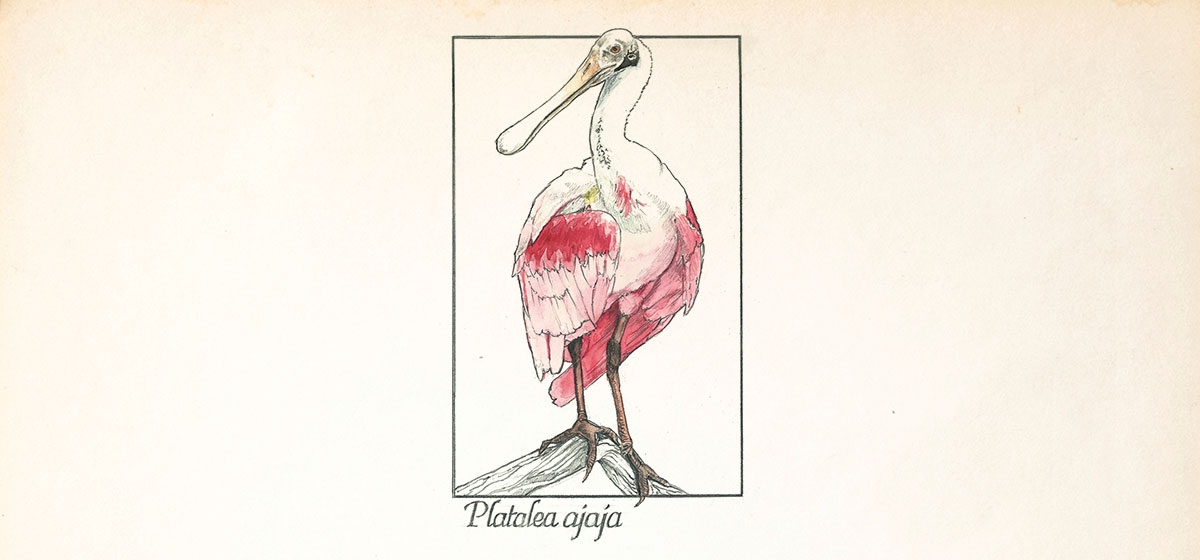
Roseate Spoonbills are birds worth traveling for. Sometimes they even travel to us. Typically found on the Gulf Coast, the first time I spotted one was on a marathon birding adventure I took to south Texas in 2005. To bird far from Pittsburgh meant I’d see unfamiliar species in new habitats. The spoonbills didn’t disappoint.
A pink and white wading bird with a bald head, greenish face and bill flattened into a long, spoon-shaped paddle, this avian oddity measures a little less than three feet long and weighs about four pounds, with a wingspan of some 50 inches. They wade and walk, sifting back and forth through the water, straining morsels from the mix and adding carotenoid to their bodies, which creates a startling pink hue in otherwise white feathers. Roseate Spoonbills are widespread in South America and dot our southern coast, miniature visual cousins to flamingos, though otherwise unrelated.
So what was a Roseate Spoonbill doing in Harrisburg, Pa., last September, thousands of miles from home? And a spoonbill spotted near Lancaster in July 2017? Sometimes, hurricanes and other strong weather systems can blow birds far off course, so it’s possible that the big storms in September forced the Harrisburg bird far from its home range. For the spoonbill earlier in the summer, assuming it was a different individual, it’s hard to say.
Still uncommon due to habitat loss and feeding ground degradation, spoonbill numbers have slowly risen since a massive decline in their 19th century populations. Recent sightings of this otherworldly species were the first documented cases of spoonbills in Pennsylvania since 1968, when one was found in the Erie area. Long before that, a spoonbill was shot on Conestoga Creek in Lancaster County in 1869. So this species is an accidental rarity or vagrant, the term for a bird that unexpectedly shows up to surprise us.
In their more typical, tropical environs, spoonbills prefer mudflats, mangrove, willow and salt cedar-covered islands, and muddy-bottomed lagoons and marshes. Spoonbills in their customary habitats hew close to water, so it’s plausible to imagine a big pink bird following the Allegheny River northward along its winding course. Like its flockmates far to the south, this wayward bird would seek small fish like minnows, crustaceans like crawdads and shrimp, and insects like beetles in addition to snails, slugs and mussels.
To breed, it would have to find a sun and heat-loving partner, settle into a nesting colony, and build a bulky stick nest. There, one to five white eggs would be laid, incubated by both mother and father. After hatching and up to two months of growth, the nestlings would fledge and disperse. Perhaps even mistakenly to Pennsylvania. Perhaps even flying low, past PNC Park, the Rachel Carson Bridge, past Highland Park and beyond, a pink blur on a late spring night.
Sign up for rare bird alerts at list.audubon.org/archives/pabirds.html or see a Roseate Spoonbill in Pittsburgh (guaranteed!) at the National Aviary.





